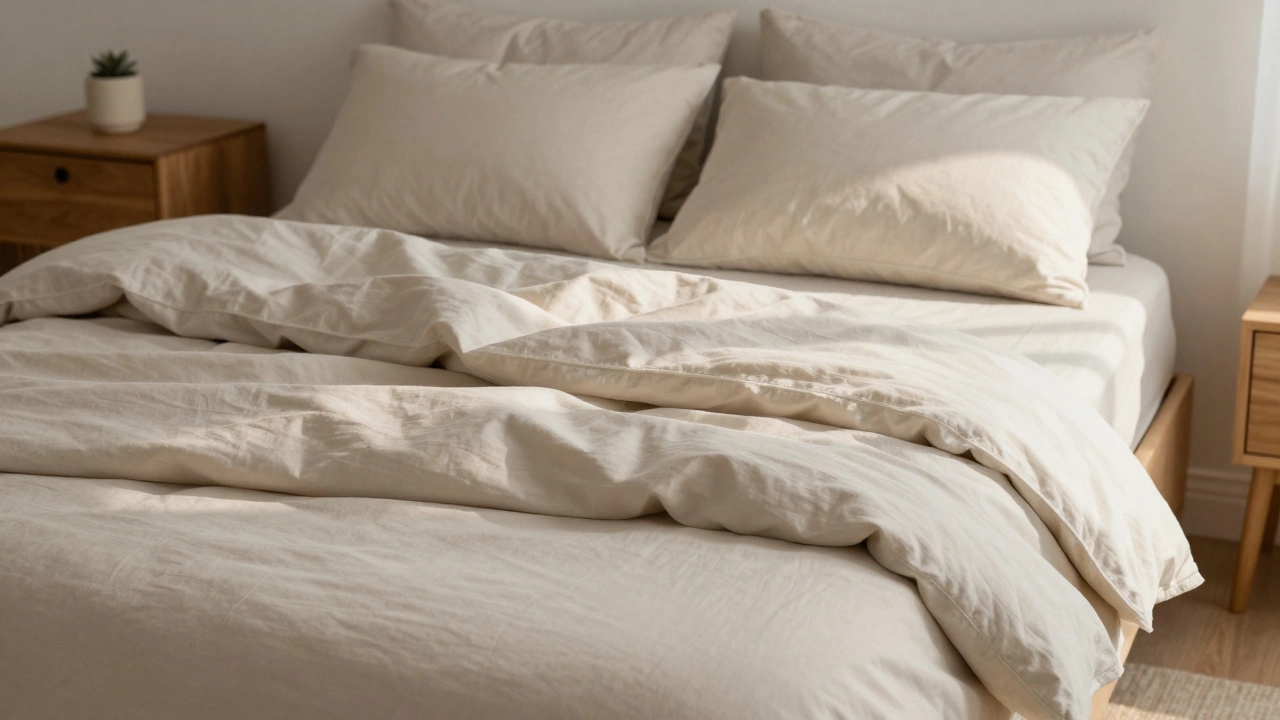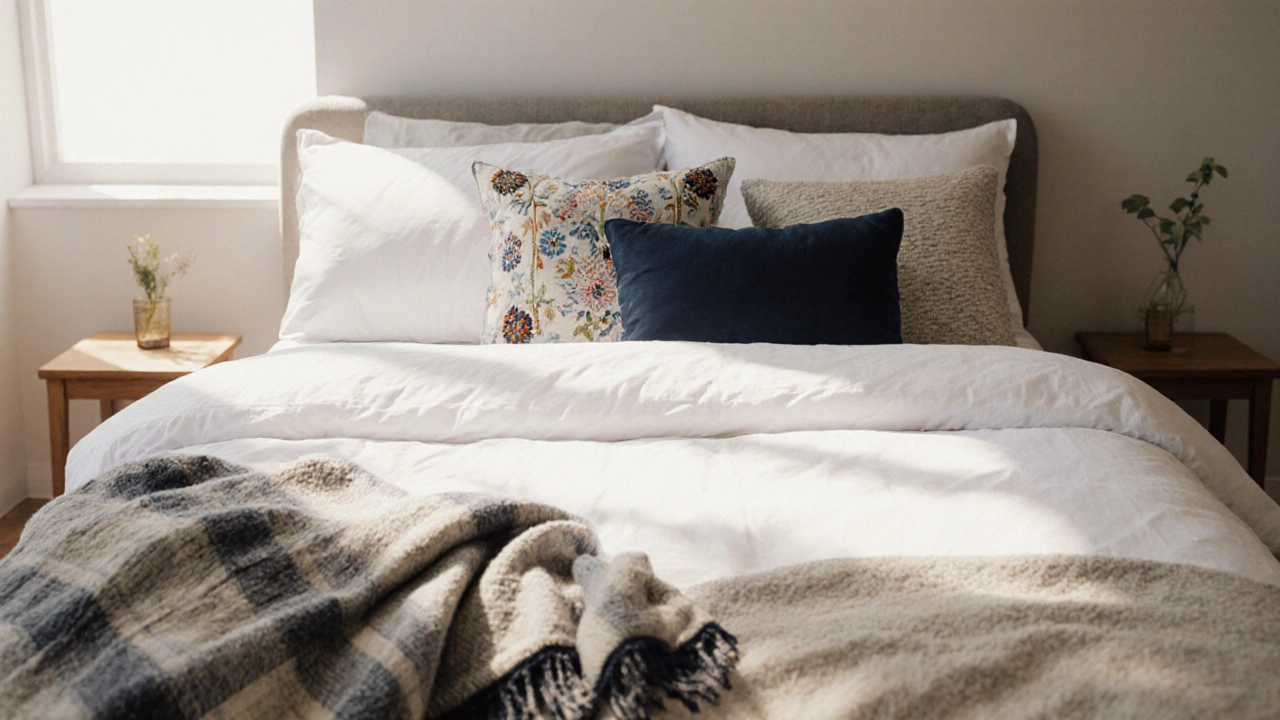Bedding Definition: A Simple Guide to Sheets, Blankets and More
When you hear the word “bedding,” you might picture a fluffy comforter or a stack of sheets. In reality, bedding is the whole collection of items that dress your bed – from fitted sheets that hug the mattress to the pillow you rest your head on. Knowing the basics helps you choose pieces that feel good, last longer, and fit your style.
Why does it matter? Because the right bedding can improve sleep quality, keep you comfortable year‑round, and even make your bedroom look put‑together without a lot of effort. Below we break down the essential categories and give you quick tips on picking and caring for each.
Main Types of Bedding
Sheets. These are the flat and fitted pieces that cover the mattress. A fitted sheet has elastic edges to stay in place, while a flat sheet lies on top of the fitted one, acting as a light cover.
Pillowcases. Simple fabric sleeves that protect pillows and add a touch of colour or pattern. They’re usually sold in pairs and match the sheet set.
Blankets, throws and quilts. Blankets are lightweight layers you can add for extra warmth. Throws are smaller, decorative blankets often draped over a chair. Quilts combine layers of fabric and batting, giving a cozy, textured feel.
Comforters and duvets. These are the thick, insulated tops you pull over the sheets. A comforter is stitched together, while a duvet is a plain insert used with a removable cover.
Mattress protectors. Not part of the look, but essential for durability. They shield the mattress from spills, dust mites, and wear.
Choosing Materials & Caring for Your Bedding
Material choice drives comfort, durability and price. Cotton is the most popular – it’s breathable, soft and easy to wash. Look for a thread count of 200‑400 for a balanced feel; higher isn’t always better. Linen feels cool, especially in hot weather, but it wrinkles more. If you want a low‑maintenance option, microfiber offers softness and resists stains, though it isn’t as breathable as natural fibers.
Bamboo fabrics are gaining fans for their silky touch and eco‑friendly vibe. They’re naturally antimicrobial, which is great if you’re prone to allergies.
To keep bedding fresh, wash sheets every 1‑2 weeks in warm water (check the label). Use a gentle detergent, avoid fabric softener on moisture‑wicking fabrics, and tumble dry on low heat. Pillows need a wash every 3‑6 months – many have removable covers you can throw in the machine.
Store extra blankets in a breathable bag, not plastic, to prevent mildew. If you use a duvet, consider a duvet cover; it protects the insert and lets you switch styles without buying a new comforter.
Finally, replace bedding when it loses softness or shows thinning. A good set can last 2‑3 years with proper care, giving you consistent comfort and keeping the bedroom looking neat.
Understanding the bedding definition means you’ll know exactly what you need, how to pick the right fabrics, and how to care for them so they stay fresh. Ready to upgrade your sleep space? Start with a simple sheet set and build from there – you’ll notice the difference fast.
What Is Bedding? A Simple, Clear Definition for Everyday Use
Bedding is everything you use on your bed to sleep comfortably-sheets, pillowcases, blankets, and duvets. It’s not just decoration; it’s essential for good sleep and hygiene.
Bedding Definition: What Items Count as Bedding?
Discover what items truly count as bedding, from mattresses and pillows to duvets and decorative throws. Learn classifications, materials, care tips, and buying advice for a perfect bedroom setup.

